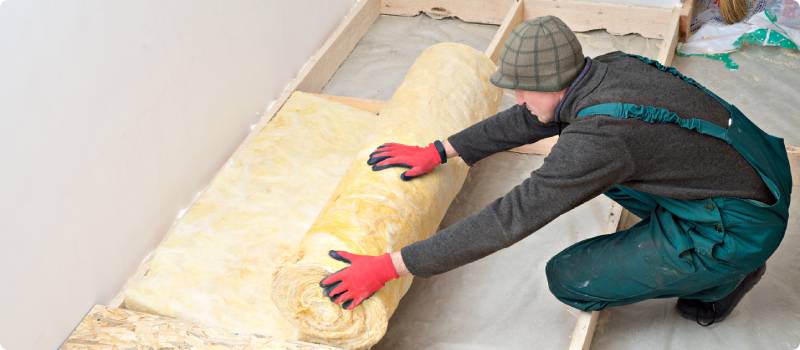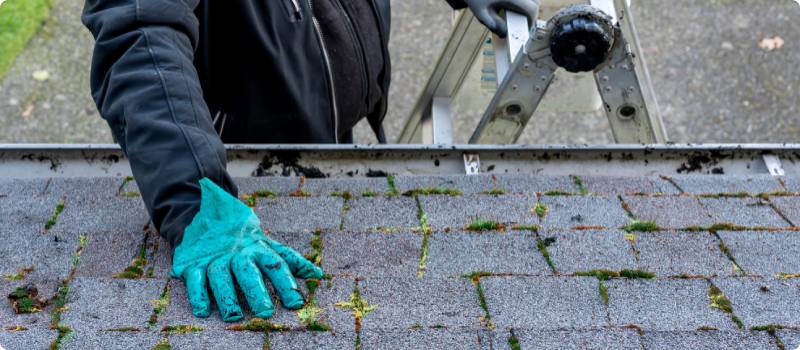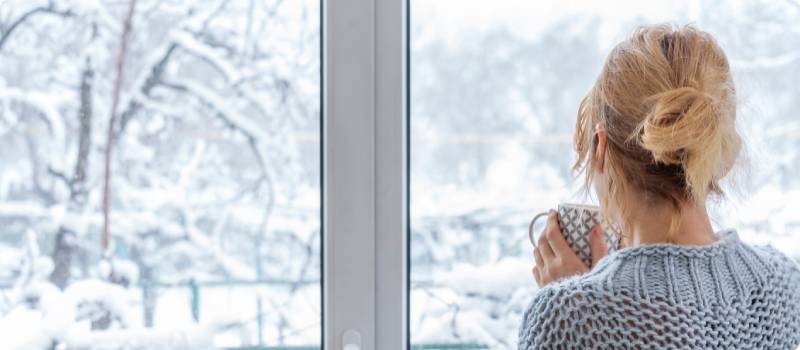
How to winterize a house
Updated January 2, 2024 . AmFam Team

How to winterize your house’s interior
Install safety alarms
- Smoke alarms: Add to every floor, in bedrooms and hallways. Change the batteries twice a year and test them monthly.
- Carbon monoxide detectors: Affix on every floor and inside of bedrooms. Change the batteries twice a year and test them once a month.
Update heating systems
- Check filters: Dirty filters make your heating system work harder. Winterize a house by replacing filters throughout.
- Inspect furnace: Hire a professional to service your furnace to ensure it's in good condition.
- Reverse ceiling fans: Hot air rises, so reversing and running your ceiling fans at the lowest speed can help you circulate warm air.
- Maintain the temperature: Setting your thermostat to 55 degrees while you’re away is a great way to winterize a house. It helps prevent your pipes from bursting.
- Smart thermostat: Digital thermostats let you run your heating system remotely. The device also enables you to monitor your home’s temperature.

Seal doors and windows
- Apply caulking: Seal gaps around drafty windows.
- Install draft guards: These fill gaps between the bottom of the door and the floor.
- Affix weatherstrip tape: Place around doors, windows and vents.
Protect your indoor pipes
- Drip faucets: Winterize a house by letting the faucets drip to prevent pipes from freezing on exceptionally cold days.
- Open cabinets: Let warm air circulate the pipes in your kitchen and bathrooms to prevent them from freezing.
- Cover exposed pipes: Winterize a house by insulating exposed pipes in the garage and basement.
- Install sensors: Water leak and temperature sensors are inexpensive and can help you monitor your pipes whether you’re home or away.
Check your attic
- Apply sealants: Block cold air from seeping around windows, vents and gaps.
- Add insulation: Insulating your attic can keep your home warmer whether you use foam, batt or loose fill.
Inspect your basement
- Check sump pump: Test your sump pump to ensure it’s working. Adding a backup power source to prevent flooding during power outages is another great way to winterize a house.
- Buy drain plugs: Have them ready because they might not be available the next time a big storm comes your way.
- Seal gaps and cracks: Apply sealants to prevent small cracks and gaps from worsening.

How to winterize your house's exterior
Service roof and gutters
- Schedule an inspection: Regular roof maintenance and repairs can help you avoid bigger issues in the future.
- Remove overhanging branches: Cut heavy branches that could snap under the pressure of ice and snow and fall onto your roof or into the side of your home.
- Clear rooftop: Debris can add unnecessary weight to your roof and cause premature rotting and mold.
- Inspect roofing material: Replace broken and loose shingles or tiles.
- Fix leaks: Locate leaks in your roof by looking for water stains on your ceilings and attic.
- Clean gutters: Blockages can cause water to freeze and prevent rainwater from properly draining away from your home.
Check chimney
- Hire a chimney sweep: A clean chimney can reduce the risk of toxic gases entering your home.
- Check your chimney cap: A secure one prevents debris and small creatures from entering your chimney.
- Test your damper: Ensure it opens and closes as expected.
Prepare yard and lawn
- Rake yard: Piles of leaves can rot under ice and snow, damaging your grass.
- Mow your grass: Maintain a healthy lawn at or around 2 inches tall before it freezes. Once frozen, stop mowing it.
- Reduce watering cycle: When temperatures drop below freezing, watering your lawn can damage it. If you must water it, try doing so only when the sun is out.
Maintain walkways and decks
- Address cracks: Ice and snow can worsen damaged asphalt, so it’s best to seal them before temperatures drop.
- Apply snowmelt: Add a solution to your driveway and high-traffic walkways to prevent ice from forming before it snows.
- Clear decks: The weight of snow and ice can get heavy, so it’s best to clear decks from unused items.
Protect outdoor items
- Store outdoor furniture: Place cushions and small items indoors. If you have pieces that are too large for your shed or garage, cover them with tarps.
- Move small items: Place tools, hoses, toys and other warm-weather outdoor items in your shed or garage.
- Set out snow tools: Have the right tools ready for the first snowfall. Some of the best items include a shovel, roof rake, ice scraper and pet-safe ice melt.
Shut down watering systems
- Cover spigots: Insulate exposed pipes and protect fixtures with insulation caps.
- Protect outdoor pipes: Disable sprinkler systems and flush water from lines so they don’t burst when the ground freezes.

Update your homeowners insurance policy
Reassessing your homeowners insurance coverage is another great way to winterize a house. Consider these five cold weather policy updates.
- Roof damage coverage helps you bridge the gap between the difference in your roof’s current value and the replacement cost of getting a new one.
- Hidden Water damage coverage provides a wider net of protection for leaks you can’t see. They could be within the walls, floors or anywhere else that isn’t visible in your home.*
- Water backup coverage mitigates the cost of repairs caused by water coming back into your home due to a backed-up drain or an overflowing sump pump.**
- Service line coverage helps pay for repairing or replacing damaged service lines. Examples include underground piping or wiring for electrical power, heating and natural gas. Service lines that aren’t underground aren’t covered.***
- Equipment Breakdown coverage is another excellent way to winterize a house. It helps you protect appliances, home systems and smart home devices from sudden mechanical, electrical or pressure systems breakdowns.†
To update your homeowners policy, contact your American Family Insurance agent today.
This article is for informational purposes only and includes information widely available through different sources. This article does not afford, offer, or guarantee any coverage.
The information on this webpage represents only a brief description of coverages, is not part of your policy and is not a promise or guarantee of coverage. If there is any conflict between this information and your policy, the provisions of the policy will prevail. Insurance policy terms and conditions may apply. Coverage features and limits vary by state and may be subject to change. Some products are not available in every state. Discount availability and eligibility vary by state and policy terms. (Discounts apply to auto and property policies.) Please check with your agent and read the policy for exact details on coverages and exclusions.
*Hidden Water Damage coverage is an optional coverage. May not be available in all states. Some restrictions apply to seasonal homes and manufactured homes. The leak must occur from within a plumbing, heating, A/C, fire sprinkler or a home appliance. Refer to your policy documents for coverage limit details. Coverage applies after the property deductible has been met. Mold damage limited to coverage limits provided by your homeowners policy.
**Sump pump and water backup coverage won’t cover things like flooding from a river rising nearby or rain leaking in through the foundation and causing damage. Talk to your insurance agent to best understand the limitations of this type of coverage and understand if it’s right for you. Coverage provided once policy deductible has been paid and only up to your policy limits. Refer to your policy for specific coverage details and exclusions.
***Some coverages may not be available in your state. Please speak with your agent to learn more about your coverage options. Coverage applies once a deductible has been met. All statements regarding insurance coverage are general descriptions. These statements do not add or modify any coverage under your insurance policy. If there is any difference in the description of the coverage/endorsement, the policy provisions will apply. Please review your policy or call your agent for information regarding coverage that may be available to you.
†Equipment Breakdown coverage provides protection should appliances, home systems or smart home devices be damaged due to mechanical, electrical or pressure systems sudden breakdown. Does not provide coverage for breakdown caused by normal wear and tear. Coverage applies once a $500 deductible has been met.
Tools & Resources
NextScripts
JSS component is missing React implementation. See the developer console for more information.

